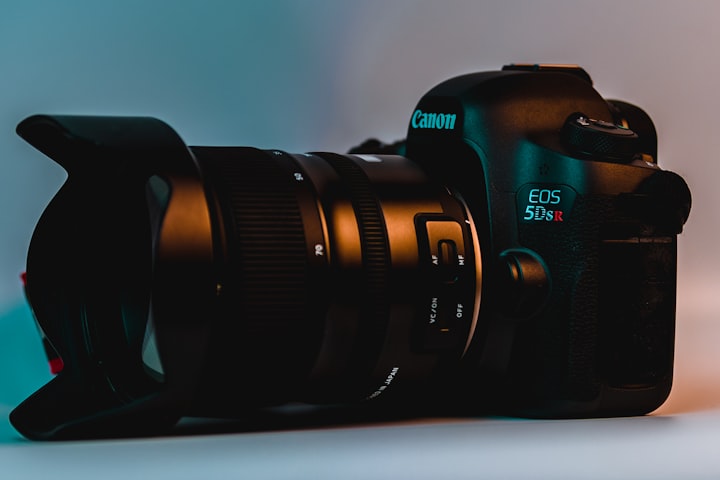IPhone vs. DSLR Camera: Capturing Moments in the Digital Age
Exploring the Advantages and Limitations of Two Photography Powerhouses

In the era of advanced technology and ever-evolving gadgets, the debate between using an iPhone and a DSLR camera for photography has gained momentum. Both devices offer unique advantages and limitations, sparking discussions among photography enthusiasts, professionals, and casual users alike. With the goal of assisting you in making an educated decision based on your interests and needs, we explore the worlds of DSLR cameras and iPhone photography in this post.
The Convenience of the iPhone
Apple's iPhones have changed the manner in which we catch and offer minutes. The comfort of having an excellent camera in your pocket consistently is irrefutable. With each new emphasis, iPhones have kept on upgrading their camera abilities, integrating highlights like Representation mode, Brilliant HDR, and Night mode. These advancements have enabled users to effortlessly take stunning photos in various lighting conditions.
The intuitive interface of the iPhone camera app also plays a significant role in its popularity. The user-friendly controls and real-time previews allow individuals, irrespective of their photography expertise, to capture images easily. The integration of social media platforms within the device further simplifies sharing pictures, making it a preferred choice for those who prioritize quick and seamless content sharing.
DSLR Cameras: Unleashing Creativity
On the opposite finish of the range, DSLR (Computerized Single-Focal point Reflex) cameras are loved for their unmatched picture quality, manual controls, and adaptability. These cameras furnish picture takers with more prominent imaginative command over their shots, considering acclimations to settings like gap, shade speed, and ISO. Such control is especially beneficial in scenarios where lighting conditions are challenging or a specific artistic effect is desired.
DSLR cameras also offer interchangeable lenses, opening up a world of possibilities for different types of photography. Whether it's wide-angle landscapes, macro shots, or telephoto portraits, the ability to swap lenses enhances the camera's adaptability to various situations. This flexibility is a major draw for photography professionals who demand top-tier quality and the freedom to explore diverse creative visions.
Image Quality and Sensor Size
One of the fundamental distinctions between iPhones and DSLRs is the sensor size. DSLR cameras generally feature larger sensors compared to the compact ones found in iPhones. A larger sensor allows for greater light capture, resulting in improved image quality, especially in low-light conditions. This advantage becomes evident when examining details, dynamic range, and noise performance in photographs.
While iPhones have made impressive strides in computational photography, their smaller sensors inherently limit their ability to compete with the image quality produced by DSLRs, particularly when it comes to large prints or professional-grade work.
The Role of Post-Processing
Post-processing plays a pivotal role in modern photography. iPhones come equipped with powerful built-in software that automatically enhances images, making them ready to share instantly. However, this automated approach can sometimes sacrifice fine-tuned adjustments that DSLR photographers can achieve during manual post-processing using software like Adobe Lightroom or Photoshop.
DSLR photographers have greater control over the editing process due to the raw image files they can capture. This provides a broader scope for adjustments and refinements, allowing photographers to fully realize their creative vision during the editing stage.
Making Your Choice
In the end, the decision between using an iPhone or a DSLR camera boils down to your individual needs and preferences. If convenience, quick sharing, and casual photography are your priorities, an iPhone might be the perfect companion.A DSLR camera is most likely the preferable option, though, if you're searching for unmatched image quality, creative freedom, and the capacity to experiment with different lenses.
It's significant to highlight that the distinction between these two possibilities is becoming increasingly hazy due to technological improvements. The photographic skills of new iPhone models become closer and closer to those of conventional DSLRs.
Nevertheless, the specialized nature of DSLR cameras ensures they remain the go-to choice for professionals and dedicated enthusiasts.
In conclusion, both iPhones and DSLR cameras have their own strengths and weaknesses in the realm of photography. The rise of smartphone photography speaks to the accessibility and convenience that iPhones provide, while the enduring appeal of DSLRs lies in their unmatched image quality and creative possibilities. Ultimately, the choice you make should align with your photography goals, whether that's capturing everyday moments or pursuing a career in professional photography.
About the Creator
TREndy NEWS
U will find very trending and most interesting stories in this page If you like my stories, click the heart, leave a comment and a tip! Make a pledge! Thanks! Read again!






Comments
There are no comments for this story
Be the first to respond and start the conversation.